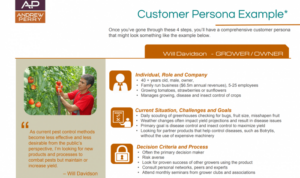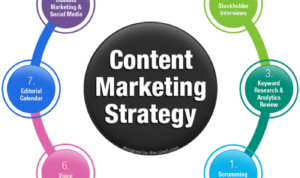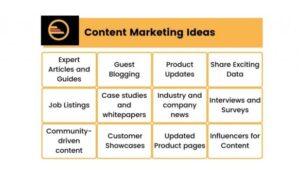Creating a Data-Driven Marketing Plan kicks off our journey into the realm of modern marketing strategies, where data reigns supreme and unlocks endless possibilities for business success. Get ready to dive deep into the world of data-driven marketing with us!
In today’s fast-paced digital landscape, harnessing the power of data is crucial for businesses looking to stay ahead of the competition. By creating a solid data-driven marketing plan, companies can target their audience more effectively, personalize their campaigns, and ultimately drive better results.
Understanding Data-Driven Marketing
Data-driven marketing is a strategic approach that utilizes customer data and insights to create targeted campaigns and personalized experiences. In modern business strategies, data-driven marketing plays a crucial role in helping companies understand their customers better, improve their marketing efforts, and drive business growth.
Differences from Traditional Marketing
Data-driven marketing differs from traditional marketing methods in several key ways. While traditional marketing relies on broad demographics and assumptions, data-driven marketing uses specific customer data to create highly targeted campaigns. Traditional marketing strategies may include mass advertising through TV or print media, while data-driven marketing focuses on personalized digital advertising, email marketing, and social media campaigns tailored to individual preferences.
Examples of Successful Data-Driven Marketing Campaigns
– Netflix utilizes customer viewing history and preferences to recommend personalized content, increasing user engagement and retention.
– Amazon uses customer purchase history and browsing behavior to suggest products, leading to higher conversion rates and customer satisfaction.
– Starbucks leverages customer data from its loyalty program to send personalized offers and promotions, driving repeat purchases and customer loyalty.
Role of Data Analytics in Data-Driven Marketing
Data analytics plays a critical role in shaping data-driven marketing strategies by analyzing customer data, identifying patterns and trends, and extracting valuable insights. Through data analytics, companies can understand customer behavior, preferences, and purchasing habits, enabling them to create targeted campaigns that resonate with their audience and drive measurable results.
Developing a Data Collection Strategy
Developing a solid data collection strategy is crucial for any successful data-driven marketing campaign. By gathering data from various sources, marketers can better understand their target audience and tailor their strategies accordingly.
Different Sources of Data for Marketing Purposes
- Social media platforms: Analyzing engagement metrics, demographics, and user behavior on platforms like Facebook, Instagram, and Twitter.
- Website analytics: Tracking website traffic, bounce rates, and conversion rates using tools like Google Analytics.
- Email marketing data: Monitoring open rates, click-through rates, and subscriber behavior to optimize email campaigns.
Importance of Collecting Accurate and Relevant Data
- Accurate data ensures that marketing decisions are based on real insights rather than assumptions, leading to more effective campaigns.
- Relevant data helps marketers understand customer preferences, behaviors, and pain points, enabling them to create personalized and targeted marketing messages.
Methods for Tracking and Measuring Key Performance Indicators (KPIs)
- Setting specific KPIs related to marketing objectives, such as lead generation, conversion rates, or customer retention.
- Using tools like Google Data Studio, HubSpot, or Tableau to visualize and track KPIs in real-time.
- Regularly analyzing KPI data to identify trends, areas for improvement, and opportunities for optimization.
Examples of Tools and Software for Data Collection and Analysis
- Customer Relationship Management (CRM) systems like Salesforce or Zoho CRM for managing customer data and interactions.
- Data management platforms such as BlueConic or Lotame for collecting, organizing, and activating customer data across channels.
- Survey tools like SurveyMonkey or Typeform for gathering customer feedback and preferences to inform marketing strategies.
Creating Buyer Personas: Creating A Data-Driven Marketing Plan

Creating buyer personas is a crucial step in developing a data-driven marketing plan. Buyer personas are fictional representations of your ideal customers based on real data insights. These personas help marketers better understand their target audience, their needs, preferences, and behaviors, allowing for more personalized and effective marketing strategies.
Process of Creating Detailed Buyer Personas
- Start by analyzing your existing customer data to identify patterns and trends.
- Conduct surveys, interviews, and market research to gather more information about your target audience.
- Segment your audience based on demographics, psychographics, and behavior to create specific personas.
- Give each persona a name, background, goals, challenges, and preferences to humanize them.
- Use tools like customer relationship management (CRM) systems to track interactions and refine your personas over time.
Tips for Utilizing Buyer Personas
- Use buyer personas to tailor your messaging, content, and offers to specific segments of your audience.
- Personalize marketing campaigns based on the preferences and needs of each persona.
- Consider the buyer’s journey and align your marketing efforts accordingly for each persona.
- Regularly update and refine your personas as you gather more data and insights.
Impact of Accurate Buyer Personas
- Increased conversion rates: By targeting the right audience with personalized messages, you are more likely to convert leads into customers.
- Improved engagement: Tailoring your marketing strategies to specific personas helps in building stronger relationships with your audience.
- Higher ROI: Effective use of buyer personas leads to more efficient marketing spend and better return on investment.
- Enhanced customer satisfaction: Meeting the needs and expectations of your target audience leads to happier customers and brand loyalty.
Personalizing Marketing Campaigns

Personalization plays a crucial role in data-driven marketing as it allows businesses to connect with their target audience on a more individual level, increasing engagement and ultimately driving conversions.
Importance of Personalization
Personalization in marketing campaigns can lead to higher customer satisfaction, increased brand loyalty, and improved ROI. By tailoring content to the specific needs and preferences of each customer, businesses can create a more meaningful and relevant experience.
Examples of Successful Personalized Campaigns, Creating a Data-Driven Marketing Plan
- Amazon’s personalized product recommendations based on past purchases and browsing behavior have significantly increased sales and customer loyalty.
- Spotify’s personalized playlists and recommendations have helped them retain users and attract new subscribers.
Data Analysis for Personalized Content
Data analysis plays a crucial role in creating personalized content for target audiences by providing insights into customer behavior, preferences, and interests. By analyzing data, businesses can segment their audience and tailor content accordingly to increase relevance and engagement.
Tips for Implementing Personalization Strategies
- Utilize customer data to create dynamic content that resonates with different segments of your audience.
- Implement A/B testing to optimize personalized content and messaging for better results.
- Use marketing automation tools to deliver personalized messages at the right time and through the right channels.




